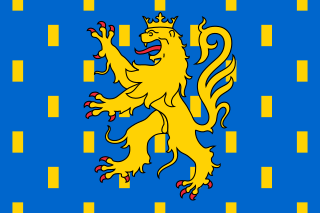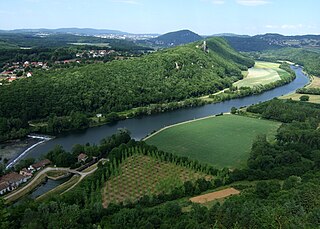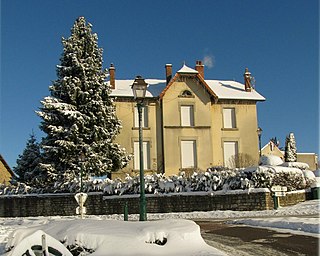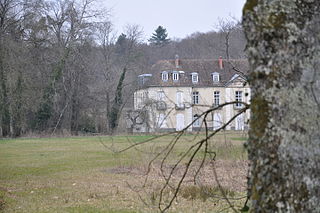
Franche-Comté is a cultural and historical region of eastern France. It is composed of the modern departments of Doubs, Jura, Haute-Saône and the Territoire de Belfort. In 2021, its population was 1,179,601.

Doubs is a department in the Bourgogne-Franche-Comté region in Eastern France. Named after the river Doubs, it had a population of 543,974 in 2019. Its prefecture is Besançon and subprefectures are Montbéliard and Pontarlier.

Jura is a department in the eastern French region of Bourgogne-Franche-Comté. The department takes its name from the Jura Mountains. Its prefecture is Lons-le-Saunier; subprefectures are Dole and Saint-Claude. In 2019, Jura had a population of 259,199. Its INSEE code is 39. It has a short portion of the border of Switzerland.

The arrondissement of Pontarlier is an arrondissement of France in the Doubs department in the Bourgogne-Franche-Comté region. It has 147 communes. Its population is 112,913 (2016), and its area is 2,050.5 km2 (791.7 sq mi).

Loray is a commune in the Doubs department in the Bourgogne-Franche-Comté region in eastern France.

Noironte is a commune in the Doubs department in the Bourgogne-Franche-Comté region in eastern France.

The Morteau sausage is a traditional smoked sausage from the Franche-Comté French historical region and take its name from the city of Morteau in the Doubs department. It is smoked in traditional pyramidal chimneys, called "tuyés". It is a strongly flavoured and very dense uncooked sausage.

Abbans-Dessous is a commune in the Doubs department in the Bourgogne-Franche-Comté region of eastern France.

Abbans-Dessus is a commune in the Doubs department in the Bourgogne-Franche-Comté region in eastern France.

Arc-et-Senans is a commune in the Doubs department in the Bourgogne-Franche-Comté region of eastern France.

Montferrand-le-Château is a commune in the Doubs department in the Bourgogne-Franche-Comté region in eastern France.

École-Valentin is a commune in the Doubs department in the Bourgogne-Franche-Comté region in eastern France.

Éternoz is a commune in the Doubs department in the Bourgogne-Franche-Comté region in eastern France.

Montlebon is a commune in the Doubs department in the Bourgogne-Franche-Comté region in eastern France.

Loulans-Verchamp is a commune in the Haute-Saône department in the region of Bourgogne-Franche-Comté in eastern France.

The flood of Doubs river was the biggest flooding in the history of the Doubs river (France); the water rose up to nearly 10 metres above the usual level, January 21, 1910. The principal departements affected were the département of Doubs, the département of Jura and also the département of Saône et Loire. At least one person was killed, and many others may have been killed because of this flood.

Besançon-Viotte is the main railway station located in Besançon, Doubs, eastern France. The station was opened in 1855 and is located on the Dole–Belfort railway, Besançon–Le Locle railway and Besançon-Viotte-Vesoul railway. The train services are operated by SNCF. Besançon Franche-Comté TGV is a high speed station located 10km north of Besançon.

The Château de Cléron is a 14th-century castle in the commune of Cléron, 25 kilometres (16 mi) south of Besançon, in the Doubs département of France.

Bourgogne-Franche-Comté is a region in eastern France created by the 2014 territorial reform of French regions, from a merger of Burgundy and Franche-Comté. The new region came into existence on 1 January 2016, after the regional elections of December 2015, electing 100 members to the Regional Council of Bourgogne-Franche-Comté.
Les Auxons is a commune in the Doubs department in the Bourgogne-Franche-Comté region in eastern France. The result of the merger, on 1 January 2015, of the communes of Auxon-Dessous and Auxon-Dessus. Besançon Franche-Comté TGV station is situated in the commune.
























